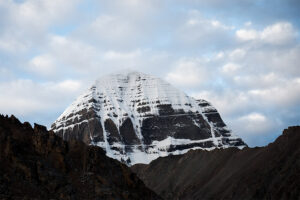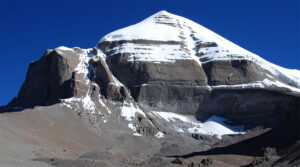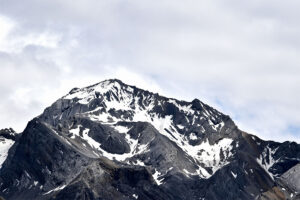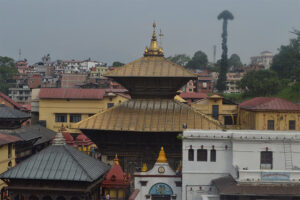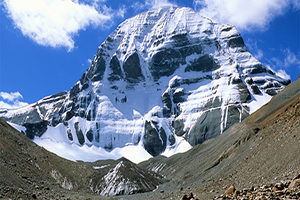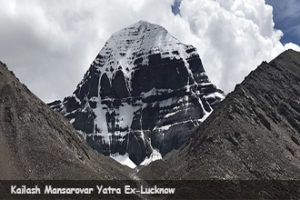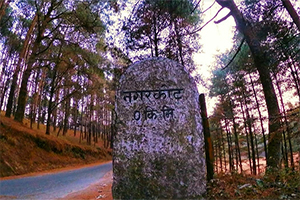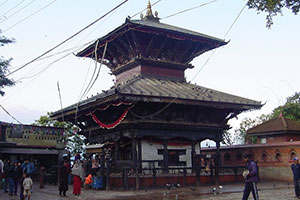Muktinath Temple Nepal
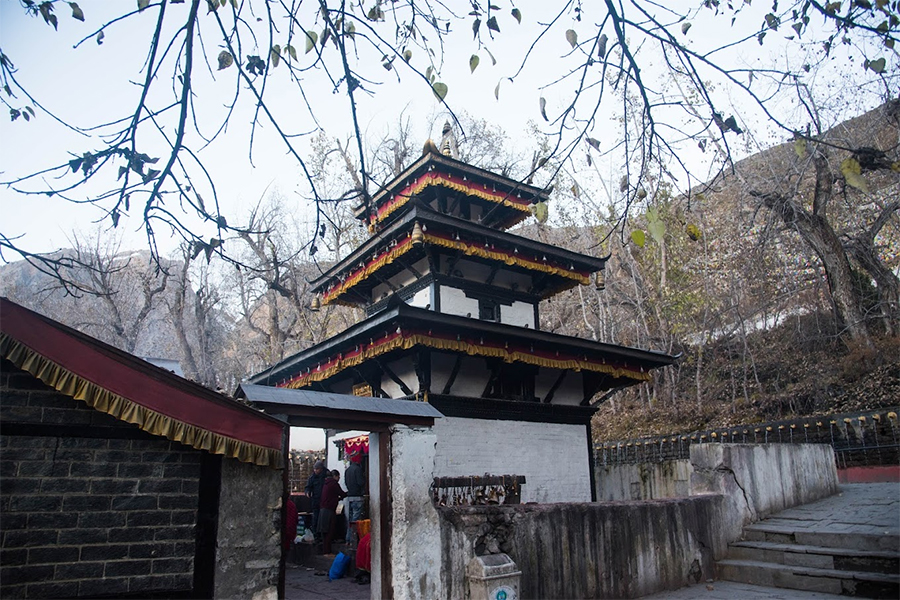
Kailash Mansarovar Yatra is one of the epic Hindu pilgrimages where devotees get to see so many famous temples. Muktinath Temple is one such temple that you can visit on this Kailash Mansarovar Yatra. Muktinath Temple is one of the most famous temples of Lord Vishnu in Nepal. There are so many mythological legends of Muktinath Temple. The temple is also considered to be one of the temples situated at high altitudes. Hindus and Buddhists have a tremendous devotion to this temple. The temple Is incredibly sacred and is a spiritual destination for Hindus and Buddhists worldwide. You can plan a tour of Muktinath Temple while going on your Kailash Mansarovar Yatra.
The altitude of Muktinath Temple
Muktinath Temple is situated at an altitude of 3710 meters (12172 ft).
Location of Muktinath Temple
This Temple is located in Muktinath Valley. The valley is at the foot of the Thorong La mountain pass in the Mustang region in Nepal.
Meaning of Muktinath Temple
Muktinath is a word that is taken from two different words, Mukti and Nath. Mukti means salvation, freedom of Nirvana. Nath means a god or master. Thus, Muktinath in the Sanskrit language means Lord of Salvation.
Legend of Muktinath Temple
Muktinath Temple is the temple of Lord Vishnu. This temple is very old and its ancient roots go back to mythological times. This Temple is the 106th temple out of the 108 Divya Desams of the Vaishnava religion.
Muktinath Temple and the Legend of the Demon King Jalandhar
Muktinath Temple is a very ancient temple of Lord Vishnu. There are many mythological legends associated with this temple and its origins. The most famous story is about a demon called Jalandhar and Vrinda. Jalandhar was a powerful demon who was born out of the fire of the third eye of Lord Shiva. In this sense, he was none other than a son of Lord Shiva. But Jalandhar was evil and he had a very good wife called Vrinda. Vrinda was an ardent devotee of Lord Vishnu. But the evil demon king Jalandhar did not like the gods and attacked them. He cast an evil eye on Goddess Parvati and this angered Lord Shiva. Jalandhar and Lord Shiva fought very hard with each other. But the devotion of Vrinda towards her husband saved Jalandhar every time.
Seeing this Lord Vishnu took the form of Jalandhar and went to Vrinda. Vrinda could not recognize Lord Vishnu and thought that he was Jalandhar, her husband. She lost her devotion and this enabled the gods to kill Jalandhar. When Vrinda realized that Lord Vishnu had tricked her, she cursed Lord Vishnu to turn to stone. She burned herself and a tulsi plant grew out of her ashes. The stone became to be worshipped as Shaligram and even today, the tulsi plant is kept over the shaligram in memory of Vrinda and her ardent devotion to Lord Vishnu. Lord Vishnu is worshipped in Muktinath Temple as Muktinath, the god who gained Mukti or freedom.
Muktinath Temple – A Shaktipeeth
Muktinath Temple is one among the 108 Shakti Peeth of Devi Sati. After she immolated herself, Lord Shiva took her body and flew across the skies. The different body parts of Devi Sati fell at different places and these became the renowned Shakti Peeths. It is believed that the forehead of Sati fell at Muktinath. The Shakti Peeth at Muktinath Temple is addressed in the name of Gandaki Chandi. There is a Bhairava shrine in the temple which is named Chakrapani.
Muktinath Temple in Tibetan Buddhism
Tibetan Buddhism also holds Muktinath Temple in very high regard. Guru Rinpoche or Padmasambhava was an ancient Tibetan master, who propagated Buddhism in Tibet. He traveled to Tibet and on the way, meditated at Muktinath Temple. Tibetan Buddhists call the temple Chumig Gyatsa or Hundred Waters in the Tibetan language. The temple is a place of tantric worship for Tibetan Buddhists. The temple is a place where dakinis, female spirits, and goddesses, reside. They are also known as Sky Dancers. For the Tibetan Buddhists, the idol in the temple originated itself and is a form of Avalokitesvara.
The Religious Importance of Muktinath Temple for the Hindus
Muktinath Temple is so sacred that visiting the temple is said to free devotees from the cycle of birth and death. Praying at Muktinath Temple with full devotion is sure to give Nirvana to its devotees. That is why Muktinath Temple is also famous as a Mukti Kshetra or a place of salvation. Muktinath Temple is the only temple out of the 108 temples of Lord Vishnu that is situated outside India. It is a Swayam Vyakt Kshetra or self-manifested place of Lord Vishnu. Muktinath Temple is the only temple where all the five elements – earth, sky, fire, air, and water) are present. If you are a gifted soul, Lord Vishnu and Goddess Sri Devi and Bhoo Devi will give you Mukti, and hence the temple is called Muktinath Temple.
Muktinath Temple and the Mystery of Number 108
Muktinath Temple is strangely associated with the number 108. The temple is one of the 108 Divya Desams (temples of Lord Vishnu). There is a courtyard where there are 108 water spouts which are shaped in the form of a bull’s head. These water spouts are called Mukti dharas. The freshwater of Kali Gandaki river springs out from these bull-shaped spouts and collects in a sacred pond. There are 12 zodiac signs in Hindu astrology and 9 planets. This gives 108 combinations. Also, it is very interesting to note that there are 27 lunar nakshatras, which are divided into 4 quarters or padas. This also gives the number 108 padas in total.
Kali Gandaki River – the Source of the Shaaligram
Shaligram is a stone that symbolizes Lord Vishnu. He is worshipped in the form of a Shaligram stone in every Vishnu temple. The Kali Gandaki river is one of the major rivers that flow through Nepal. It flows near Muktinath Temple and is a major source of Shaligram stone. These stones are circular and are required to establish a temple of Lord Vishnu. Shaligram stone has different patterns and these are worshipped as different forms of Lord Vishnu. The stones are even found in the shape of a conch and chakra which are symbols of Lord Vishnu.
- White – this color is of Vasudeva
- Yellow – this color is of Vamana
- Black – this color is of Vishnu
- Green – this color is of Narayana
- Blue- this color is of Krishna
- Golden yellow or reddish yellow - this color is of Narasimha
Construction of Muktinath Temple
Muktinath Temple has a pagoda-like structure which is typically found in Nepal. The temple was built in the 19th century, although there are mentions of this temple even in the 10th century. The main idol is Lord Muktinath (a form of Lord Vishnu). The idol is made entirely of gold and is life-size. The idol is also referred to as Sri Paramapatha Nathan. There are other idols of Lord Shiva and Goddess Parvati, Bhoodevi (earth goddess), Saraswati (goddess of learning), Janaki (Sita), Luv and Kush (sons of Ram and Sita), Garuda (mount of Lord Vishnu), and Sapt rishis (seven holy sages), in the temple.
The other attraction in the temple is a huge courtyard which is called prakaram. The water of this pond comes from the natural spring water of the Kali Gandaki river. 108 water spouts are in the shape of a bull’s head. Water pours forth from these spouts and collects in the pond. Bathing in this pond is considered very sacred. There are two separate kunds which are called Saraswati Kund and Lakshmi Kund.
Festivals celebrated in Muktinath Temple
Muktinath Temple celebrates major Hindu festivals such as Ram Navami, Vijaya Dashmi, and Rishi Tarpani. Even Buddhists take part in the festivities.
How to Reach Muktinath Temple
You can contact your tour service provider if they offer a visit to Muktinath Temple in Kailash Mansarovar Yatra. You can even fly in a helicopter from Kathmandu and visit Muktinath Temple.
Best season to visit Muktinath Temple
March to May and September to October are the best times to visit Muktinath Temple.

